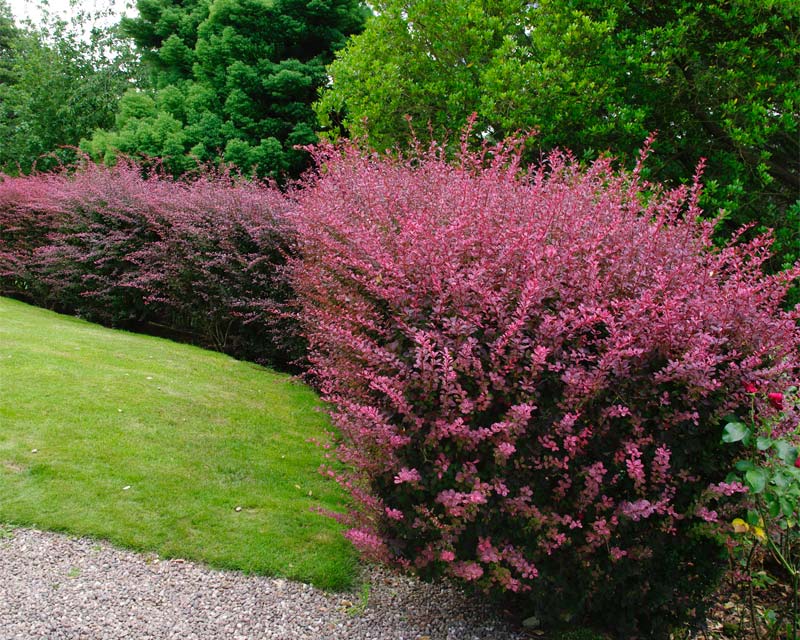Grüne Heckenberberitze – sehr dicht wachsen undurchdringlich, robust gegenüber jedem Standort. Giftigkeit, leicht giftig (Details ). Familie, Berberitzengewächse (Berberidaceae). Fruchtart, Beerenfrüchte.
BER-ber-iss thun-BER-jee-eye. Grown for its neat habit, yellow flowers, and red fruit, this shrub .

Barberry family (Berberidaceae). It is widely grown as an ornamental . Jahrhundert ihren Weg nach Europa gefunden. The thin, grooved branches have thin, straight spines.
Stems dimorphic, with short axillary shoots. Berberis thunbergii is very shade-tolerant and can form dense stands which shade out and displace native . Der gelbe Blattrand bietet einen tollen Kontrast . Department of Agriculture, Forest Service, Rocky Mountain Research Station, Fire Sciences .

The stem bears spines, which are formed from modified shoots, and the wood inside . Virginia Tech Dendrology is THE source for tree identification. Nichelmann L(1), Bilger W(2). The plant tolerates most light exposures and soils, but purple-leaved cultivars . This cultivar was selected for its small compact size and dense growth. In spring deep red-burgundy foliage emerges as small clusters of. Photograph click to collapse contents.
Artbeschreibung Ähnlich wie B. Japanese barberry – Invasive. Compact shrub with deep purple foliage. Numerous cultivars, varieties that produces little to no fruit (have much less chance of being invasive). Etymology: Berberis: the Latinized . Perfect for pollinators £12.
Durch ihre maximale Höhe von . Hjertson Svensk Kulturväxtdatabas, SKUD . Wetness Index: FACU Physiognomy: Ad Shrub. Jetzt informieren über Preise und .